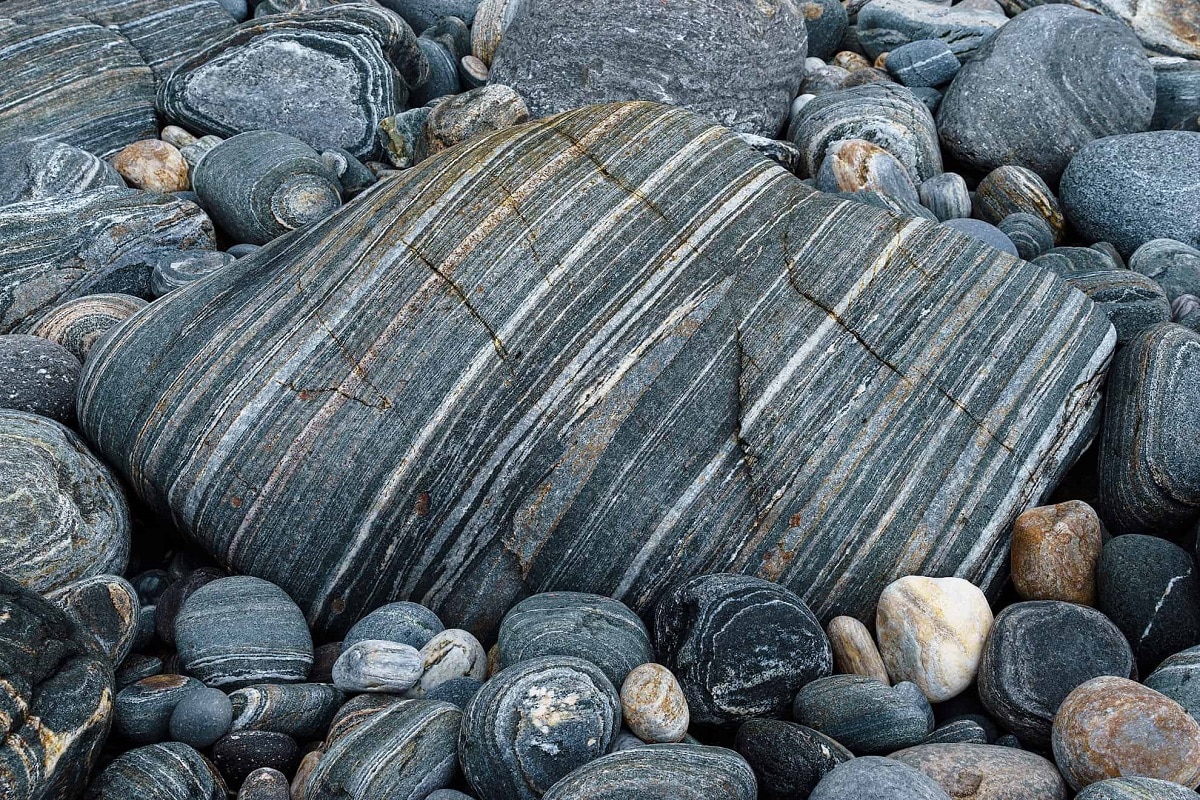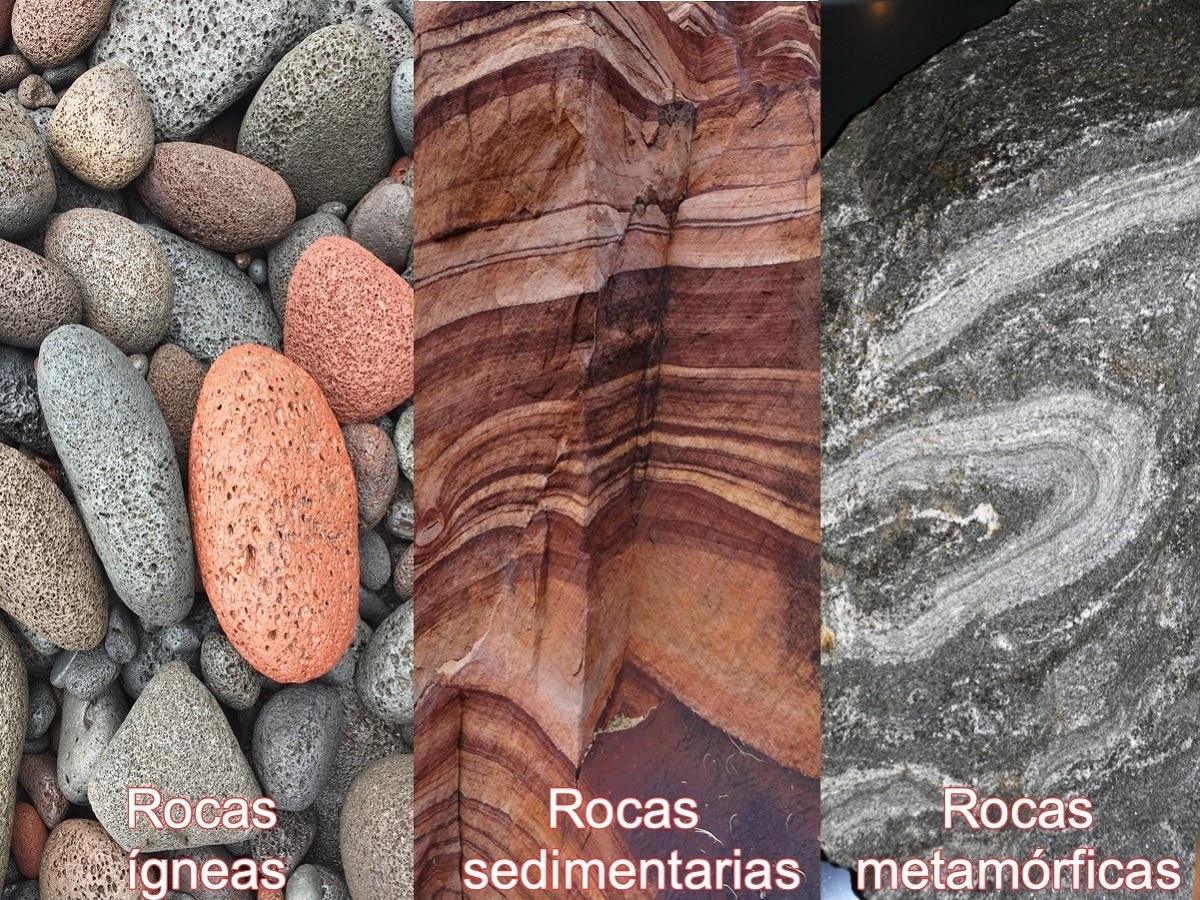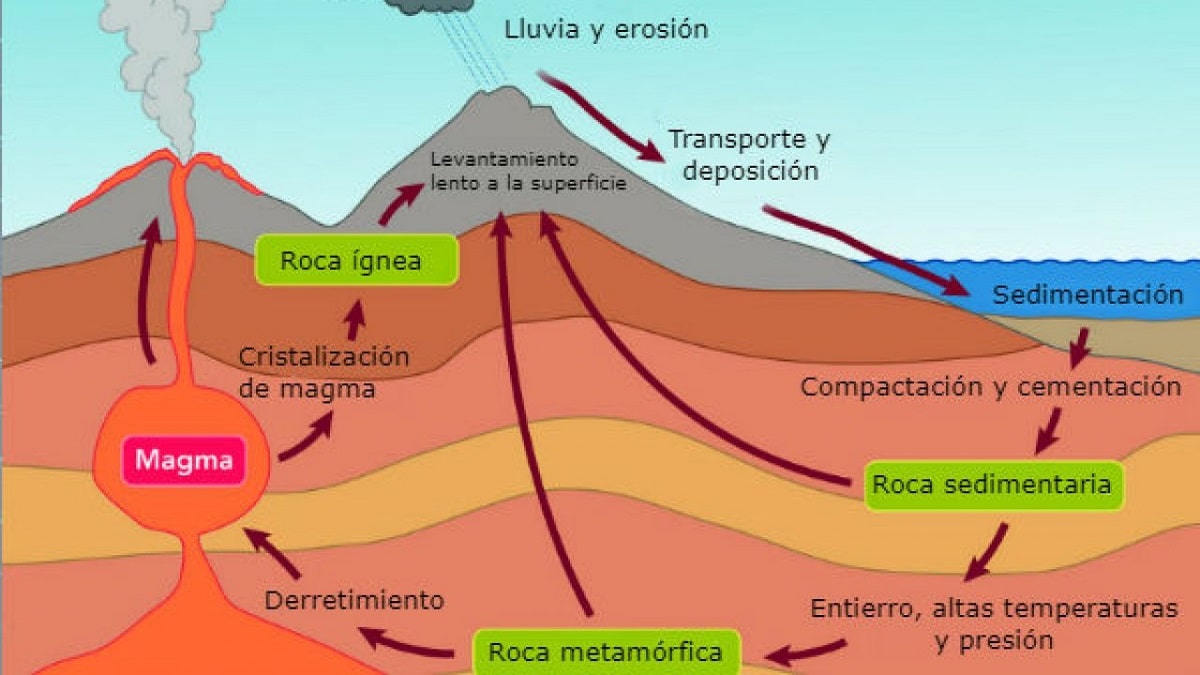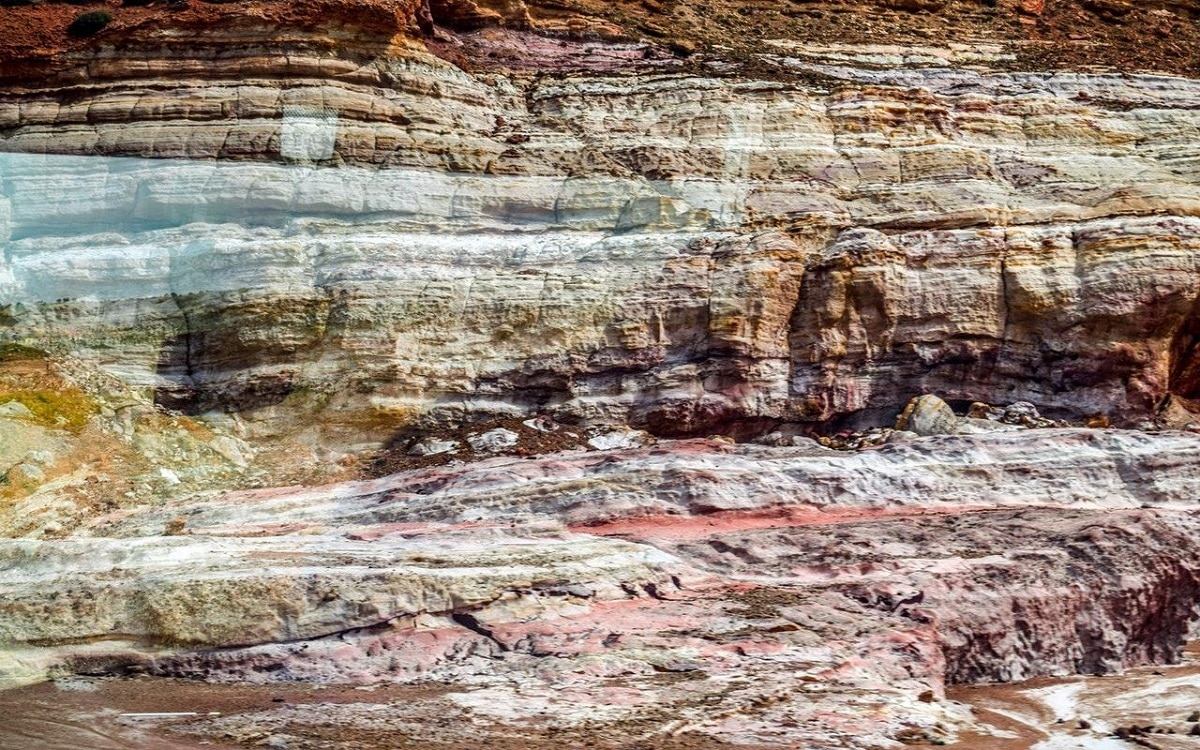
We know that there are different types of rocks on our planet depending on their origin and characteristics. We have sedimentary, igneous and metamorphic rocks. These 3 types of rocks are those that are distributed throughout the earth's crust. However, many people do not know how rocks are formed.
For this reason, we are going to dedicate this article to tell you how rocks are formed step by step, what are the characteristics at their origin and the importance of these processes.
Rocks, crystals and minerals

The rocks you see around you—mountains, canyons, and riverbeds—are made of minerals. A rock is composed of two or more minerals. You need minerals to make rocks, but you don't need rocks to make minerals. All rocks are made of minerals all parts of a mineral are made of the same substance. If you were to cut a sample of ore, it would look the same everywhere. There are approximately 3.000 different minerals in the world. Minerals are made up of chemical elements, either a single chemical element or a combination of chemical elements. There are 103 known chemical elements.
Crystals are minerals that have a chance to grow in a predetermined way. The chemical elements that make up a mineral determine the forms that they can have. We can talk about different minerals from the crystalline forms they have.
Minerals sometimes form in spaces that don't have a lot of space, so they do not have a crystalline form. When a mineral has a large mass, it is called a massive mineral. If there is a well-defined shape, with easily visible flat sides and edges, it is called a mineral glass.
Most of the crystals on Earth formed millions of years ago. Crystals form when liquid rock inside the Earth cools and hardens. Crystals sometimes form when subsurface fluids move between fractures and slowly deposit minerals. Most mineral crystals take thousands of years to "grow," but some like salt form so fast that you can watch them grow at home.
When rocks are broken into smaller and smaller pieces, they turn into sand. If you look at sand under a microscope, you'll see that it's made up of the same minerals as the rock it came from. When the plant begins to germinate in the sand, it turns from small rocks to soil.
how rocks are formed

Rocks are constantly being formed, deposited, and sinking, and then reformed over and over again. This is called the rock cycle. It's like the water cycle, but over a longer period of time. For rocks, this change takes thousands and millions of years.
Erosion
Erosion is a key part of the rock cycle. It is responsible for forming much of the interesting landscape that surrounds us. This is also a major problem, as people live in large numbers in various areas and use the environment in some way. There are things that people can do to increase erosion or decrease it. Erosion is mainly the result of weathering.
The water causes great erosion. When it falls as acid rain, it can dissolve acid-sensitive rocks. Marble and limestone can deteriorate when exposed to rain. Floods occur when the rains are very intense, such as during the monsoons. High flowing or overflowing rivers can cause landslides and erode river banks.
Wave action on the beach can cause a lot of erosion. The waves crashed against the rocks and, from time to time, the cliffs collapsed. That is why you will often find small pebbles in the sand on the beach. Strong currents, such as those found in fast-moving mountain rivers, or huge waves on the coast, can cause rocks to roll. This causes the sharp edges of the rocks to hit each other, so river rocks, as well as beach stones, look smooth.
From time to time, mountains collapse due to the freeze/thaw cycle, with large rocks crumbling into smaller ones. When the water enters the cracks in the rock, the volume of that water increases during the frost cycle, which makes the cracks larger. When cracks fill with water during snowmelt, it allows more water to sink deeper and deeper into the rocks, causing them to break apart when they freeze again.
As the wind carries sand and dust, it can destroy the missing rock layers. The wind can easily break up small sand and then use this sand to hit rocks in the path of the wind. Sometimes just the soft rock layers erode away, leaving interesting shapes. This erosion usually only occurs in very dry areas, such as deserts.
How igneous rocks are formed
New igneous rocks are created when volcanoes erupt and liquid rock rises to the Earth's surface. When rock is in a liquid state inside the Earth, it is called magma. When magma hardens within the Earth's crust, it becomes granite. Most of the mountains are made of granite.
When mountains first formed, they were tall and jagged, like the Rocky Mountains on the west coast of North America. Over time (millions of years), the mountains become ancient mountains, such as the Appalachian Mountains on the east coast of the United States. As they age, they round off and become very short in height. What happens during this time is that parts of the rock are eroded away. Rain, ice/melt cycles, wind, and running water are slowly destroying the mountain.
How sedimentary and metamorphic rocks are formed

Eventually, most of the upper rock fragments fall into downslope rivers and streams. These small pieces of sand and rock are called sediments.
When the flow of water slows down, these sediments settle to the bottom of the lake or ocean into which it flows. Over many years, layers of different rocks settle on the bottom of lakes and oceans. Over time, the sandy soil layers at the bottom of lakes and oceans turned to rock. These are called sedimentary rocks.
Metamorphic rocks are rocks that have changed. The word comes from the Greek words "meta" and "morph", which means to change shape. Metamorphic rocks are originally igneous or sedimentary rocks, but they have changed due to the movement of the crust. As the crust moves, the rocks are squeezed together, and the heat causes the rocks to warp.
I hope that with this information you can learn more about how rocks are formed and their characteristics.